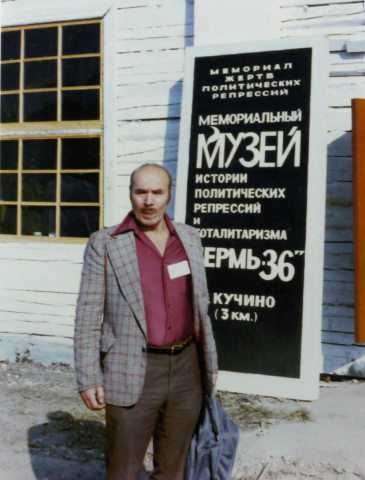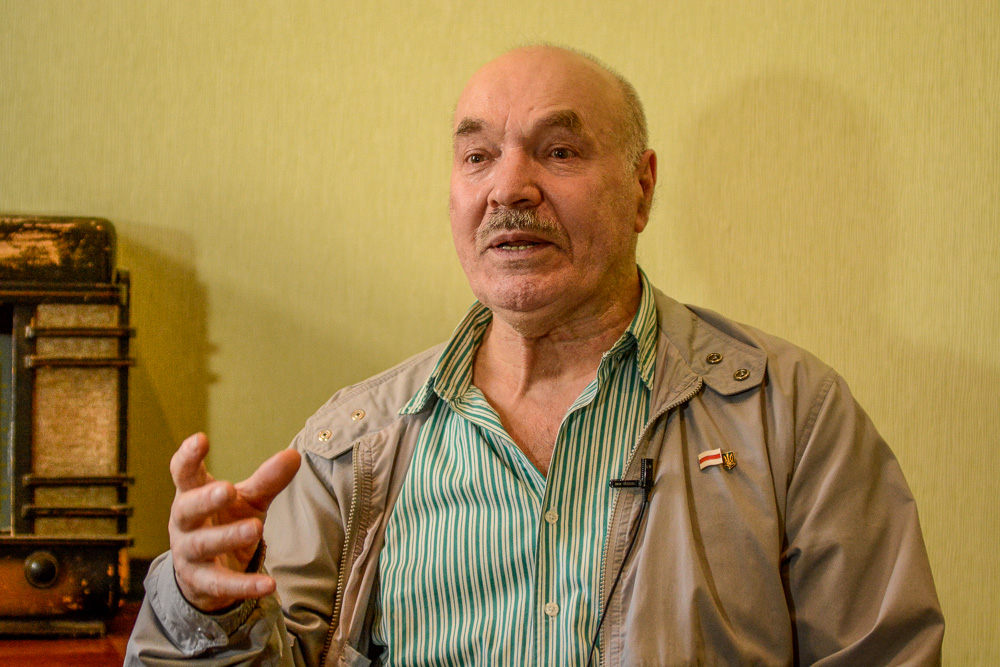What is the new purpose of the museum "Perm-36"?
The scandal with reprofiling the unique Memorial Museum of the history of political repression "Perm-36", opened on the former site of the camp for those convicted of anti-Soviet propaganda and activities, gradually acquires universal resonance. The international community asks the question: what kind of "technology" and "heroism" will the guides of the now “museum of GULag workers” speak about?
Human Rights Centre “Viasna” asked Mikhail Kukabaka, who had been serving a sentence for “anti-Soviet activities” there, about the conditions in the camp and the personal qualities of the guards.
"In Russia, another Verticalist has conceived another rewriting of history according to his whims. The GULag museum evidently doesn't fit this new history. According to Putin, one of the most bloodthirsty dictators in Europe, the so-called Generalissimo Stalin, was only an "effective manager". And of course, there was almost no violence under Stalin according to this new history. Even if there was some, it was caused by the difficult situation in the world, etc. It is no accident that “memoirs” of former guards of all levels are being published, who praise the conditions in “Perm-36”, simultaneously discrediting former prisoners as "enemies of the people". It is not easy for an outsider to understand what is the truth and what is lies or half-truth. It should be understood that any camp, including Perm, is Russia in a nutshell. We called the country "a large prison". In other words, in the camp, as well as in the country, there were no uniform rules for all, a single law. However, this is the case of the today's Russia, too.
Unlike criminal colonies, in Perm camps there were official curators from KGB. Each of them worked with a group of prisoners. These curators determined the individual regime for each of their “subordinates”. For instance, I was under the "tutelage" of KGB major Kuleshov, sent there from Murmansk (as said by him). Even in the fall of 1986 he spoke openly: "We Kukabaka, don't release
non-disarmed people from here. That's why you'll never get released unless you change your behavior.” Of course, the attitude to me and others who fought for their rights differed much from the attitude to those who "changed" their behavior in favor of the curator of the KGB.
Many different people were kept in the camp under the generic term "political prisoners" [these people were convicted under two articles of the Criminal Code of the RSFSR – Art. 64, "Treason", and Art. 70, "anti-Soviet agitation and propaganda" - Ed.].
There were also those convicted of collaboration (not always for ideological reasons) with the secret services of different countries. A significant portion of the contingent were accused of collaborating with the occupiers during the Second World War. Occasionally there were also cunning criminals, who, saving themselves of lynching by fellow criminals, declared themselves “anti-Soviet” and therefore were taken to the camp. There were also candid adventurers, far from all sorts of "ideas". One of these was some Vadim Orenberg, from a military family, who had almost never worker, but was very fond of restaurants. He discussed with his lover a plan of hijacking a plane to escape to the West and declare himself there a “fighter for Zionism”. After receiving a decent time, he quickly "reconstructed" and became a staunch fighter against Zionism. He openly collaborated with the KGB, finked, appeared on TV, etc. Naturally, the attitude on the part of the camp authorities was appropriate. There were no restrictions on food parcels or work. He was even allowed to get married in the camp, which was an unprecedented event in a political camp. He was released early thanks to Gorbachev, and immediately made a good use of his stay in the camp: he went to the US Embassy to complain about his suffering in the Soviet “concentration camp” and flew to the US, leaving his wife and child (or was he kicked out by his wife?). Most of the former "spies", as almost all convicted for war crimes, collaborated with the KGB. Naturally, they were living in the camp freely. Some even shun to walk in the dining room. Therefore, although the quality of the food was not quite good, there was no such hunger as in criminal camps, due to the elect "political prisoners" who collaborated with the KGB.
This is the space for “memoirists” who used to work as guards, especially for ordinary ones, who did not penetrate into the mechanics of the camp policy, pursued by their superiors. One can always find those who can present the events from a perspective favorable for the current propaganda – they may describe the rich percels with sausages, which were received by prisoners in the times when such goods were absent from usual shops. However, the guards won't say the things which are contrary to the tasks of the state propaganda. They won't remember that Kukabaka, during the last ten years of his imprisonment didn't receive a SINGLE parcel, though there were many people who wanted to help. They won't speak about the long hunger-strike of the Orthodox Christian Ogorodnikov, who demanded to be given a Bible, but instead of receiving it was often thrown into penal cell, just for refusing to cooperate with KGB. Reprisals also concerned the Orthodox priest Gleb Yakunin (deceased), biologist Sergey Kovalev, journalist Lev Timofeyev, radio engineer Leonid Lubman, poet and medic Viktor Nekipelov, worker Anatoliy Marchenko and other real dissidents. They behaved decently during the investigation, at the trial and in the camp. This thing alone was already an "offense" from the viewpoint of the camp guards and KGB curators. I was myself repeatedly blatantly denied any correspondence in this "Perm-36". I was also kept in the internal camp prison (cell-type facility) for had a year, being kept in the same cell with journalist Timofeyev and “socialist” Boris Chernykh (deceased).
Moreover, obstacles were created even to sending review appeals, complaints to the prosecutor's office and other official institutions.
I remember captain Rak, of a pygmy height, like Putin. He was always angry, with a sadistic smile. For instance, he noted me writing an appeal to the prosecutor: he comes and takes the paper, ostensibly to check. I take a new sheet of paper and start writing again. He again takes it away with a mocking grin, and so on to infinity. You cannot hide anywhere, and there are enough informers, too. One had to contrive to send letters. Even in 1988, when I was the last of persons convicted under Art. 70 of the CC RSFSR, I was practically deprived of correspondence, unlike other prisoners.
I believe that the local KGB assured the guards that I would not be released and therefore they could do whatever they wanted with me. This was because I flatly refused to give written and all sorts of promises, requests, and so on. Gorbachev's decree for my release was an unpleasant surprise for the camp bosses. I was relesaed rudely and secretly, without being warned or given time to say goodbye to fellow prisoners. As if they were carrying out a “special operation”. I was ordered to pack my things, as for a transfer to another camp. Only at the headquarters, having received the documents, I realized that I was being released. They also had their last petty revenge: I was lead out of the camp when it was dark and freezing, without being explained how to get to the station. The former guards would hardly like to remember such examples. They will only speak of the sausage parcels, received by the “fighter” for Zionism Orenberg, or the repented Major of the Main Intelligence Directorate (GRU), a former employee of a Soviet Embassy. They had all reasons to be jealous of such people...
Mikhail Kukabaka, former prisoner of three psychiatric hospitals and seven camps, not counting prisons in Belarus and Mordovia.
Russia, Moscow, March 2015



















